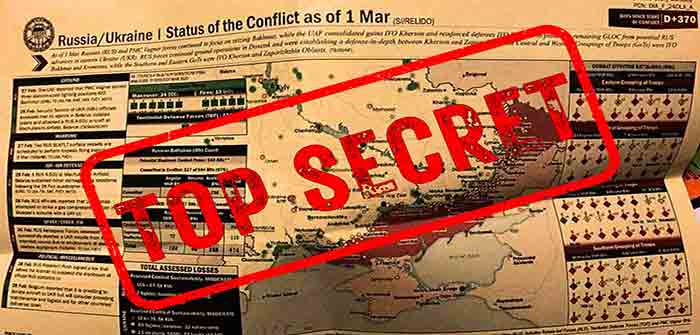
by Alex Rubenstein at The Grayzone
Classified Pentagon documents containing information about US and NATO plans for a Ukrainian offensive and key details of the ongoing war have leaked. And the Biden administration is reportedly demanding they be scrubbed from the internet. Is there a hidden agenda behind the leak?
The New York Times has reported “a significant breach of American intelligence in the effort to aid Ukraine” through the leak of classified documents which have been shared on social media. It correspondents cited “senior Biden administration officials” who apparently tipped the outlet off to the story. Documents circulating on Telegram which closely resemble those referred to by the Times are reproduced at the end of this article.
The Times writes, “Military analysts said the documents appear to have been modified in certain parts from their original format, overstating American estimates of Ukrainian war dead and understating estimates of Russian troops killed. The modifications could point to an effort of disinformation by Moscow, the analysts said… The analysts warned that documents released by Russian sources could be selectively altered to present the Kremlin’s disinformation.”
Neither the New York Times nor the “military analysts” it cited explain how the documents were altered, or why they have the appearance of tampering. However, because the leaked documents have arrived in the form of photographs of printed documents, rather than original files, the possibility of forgery or alteration must be considered.
The leaked documents claim that Russia has sustained troop losses ranging from 16,000 to 17,500 while Ukrainian losses amount to as many as 71,500 – a staggering differential that stands at odds with the triumphalist narrative projected by Kiev. They are dated March 1 2023 and appear to be part of an ongoing briefing effort to analyze the war’s progress and plan a Ukrainian counteroffensive.
The Grayzone obtained the documents from a public Telegram channel. Though they resemble those described by the Times, we can not confirm their authenticity.
According to the New York Times,…
Continue Reading